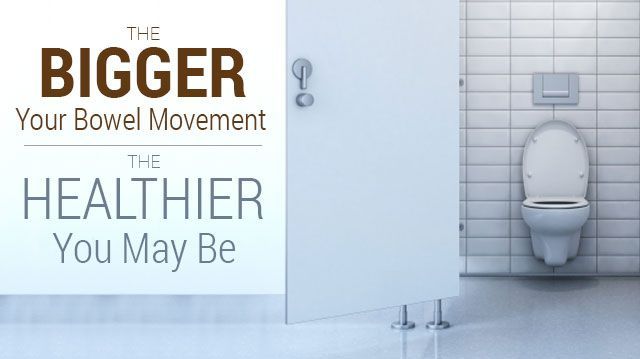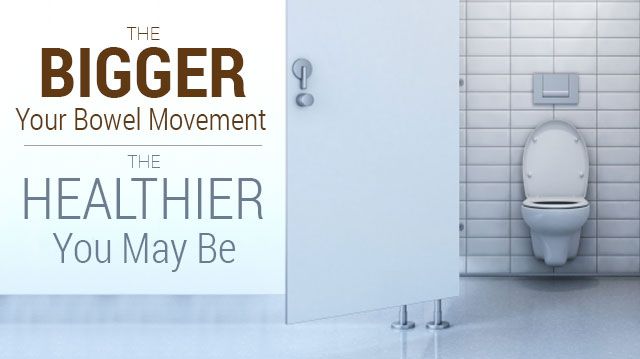
Poop. It’s either a subject of embarrassment or one to laugh at, and chances are you’ve spared it little thought other than when you’ve had a bout of the runs or the nones. What we don’t realize, however, is that our poop is one of the easiest and most definitive ways to assess our health.
To name but a few benefits, the nature of your poo can give you an indicator of what’s taking place inside your digestive tract — like whether the liver or gallbladder is under any kind of stress, whether you are suffering from infection, if you are under the influence of a hormonal imbalance or hormonal shift, and even whether you are afflicted by any mental or emotional disorders. As a result, simply turning around and looking into the toilet bowl after doing your business can provide at least as much information regarding your health as a visit to the doctor.
What your poop says about your health
In 1997, the poo-gurus (henceforth referred to as “purus”) at the University of Bristol published a study in the Scandinavian Journal of Gastroenterology, gifting the world the wonder that is the Bristol Stool Chart. This chart ranks your stools on a scale of 1 to 7, providing an indication of the health of your digestive system based on key factors such as size, shape and consistency.
According to the purus at the University of Bristol, a healthy stool is one that is long, smooth and soft. Poop with small, hard lumps or cracks are signs of constipation and a slow digestive transit time, while a watery poo with undigested chunks of food (delicious!) or small shapeless blobs is classified as diarrhea, indicating a very fast transit time through the digestive tract.
Either way, both of these scenarios are less than ideal and can say a lot about your health. For example, constipation when combined with feelings of abdominal pain, fullness after pooping or cold flesh below the belly button is a strong indicator of hypothyroidism, when the thyroid gland is underactive and the body’s metabolism is compromised. On the other hand, diarrhea along with pains while pooing, mucus or blood in your stools, or burning sensations while pooing can indicate that you may have parasites, food poisoning or Crohn’s disease.
When it comes to poop, size matters
Now that you’re hopefully in full appreciation of the usefulness a good gawp at your poo can provide, it’s time to focus in on one of the most important aspects of poop examination — size. A study that gathered poop data from 23 populations in 12 countries found that as average stool size decreased, risk of colon cancer increased dramatically.
It was postulated that this strong relationship between poop size and colon cancer was related to transit time through your body, from mouth to toilet. With smaller poo, transit time is longer, meaning your intestines have to work harder to move waste through your system and out the other side.  Another study, which compared the average stool sizes from eight countries in different parts of the world, found that the countries of Tonga, India and Japan had the largest (and therefore the healthiest) poo. The Western countries of Denmark, New Zealand, South Africa, the UK and the USA fell well short of the minimum fecal output target of 200 grams per day. And who came last in the race for the healthiest poo? Americans.
Another study, which compared the average stool sizes from eight countries in different parts of the world, found that the countries of Tonga, India and Japan had the largest (and therefore the healthiest) poo. The Western countries of Denmark, New Zealand, South Africa, the UK and the USA fell well short of the minimum fecal output target of 200 grams per day. And who came last in the race for the healthiest poo? Americans.
These findings suggest that eating a typical Western diet may not be the best way of achieving good health. Small, hard stools are a common occurrence in Western countries and are a surefire indicator that you’re suffering from constipation and the worrying array of health risks that comes with it — including irritable bowel syndrome, diverticulosis and, you guessed it, colon cancer.
It was thought that countries such as Tonga, India and Japan enjoyed larger poop due to their high consumption of plant-based foods, which provide the fiber and nutrients necessary to promote healthy digestion and fast transit time.
Next time you make a trip to the toilet for number two, turn around and take a good long look before flushing. What you see could help you determine whether there is anything missing from your diet. If you’re interested, here are more ways to tell the difference between good and bad poop.
—Liivi Hess
Liivi is an Integrative Nutrition Health Coach and is training to become a doula. She inspires women to find peace and personal power by taking control of health and fertility naturally. Liivi‘s passion is ancestral nutrition and primal lifestyle design. She and her partner Will live between Toronto, Canada and Queenstown, New Zealand.
Sources:
http://www.tandfonline.com/doi/abs/10.3109/00365529709011203
http://onlinelibrary.wiley.com/doi/10.1111/j.1462-2920.2007.01281.x/full
http://adc.bmj.com/content/71/4/311.abstract
http://journals.lww.com/jpgn/Abstract/1995/04000/Bowel_Habits_of_Normal_Thai_Children.13.aspx
http://journals.lww.com/jpgn/Citation/1988/09000/Bowel_Habit_from_Birth_to_Old_Age.2.aspx
http://www.sciencedirect.com/science/article/pii/S0022347610009959
http://nutritionfacts.org/video/stool-size-matters

